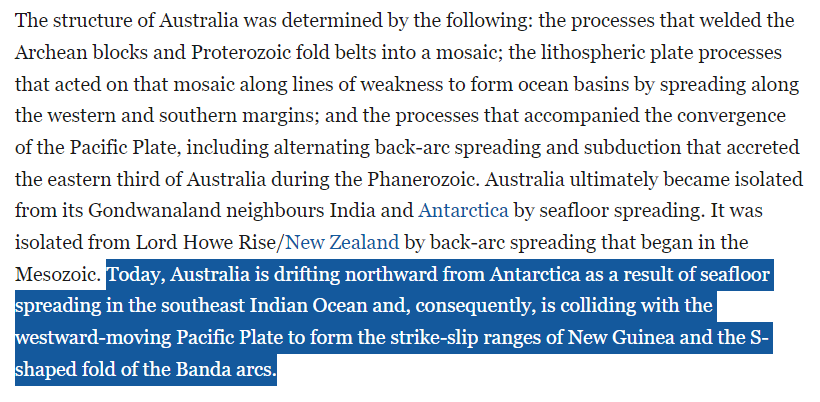
Dec. 30 – Rising tensions with China have fast-tracked the delivery of the first Australian nuclear submarine under the $90billion deal with the USA and the UK.
Australia now looks set to launch its first nuclear-powered submarine five years ahead of schedule as the West braces for confrontation with China.
Defence Minister Peter Dutton has revealed the UK and US are ‘pulling out all the stops’ to speed up the massive project.
The controversial deal – which saw Australia abandon its contract with France for a fleet of diesel submarines – could now see the new subs coming into operation in the first half of the 2030s… more


Charles Ernest Grassley (born September 17, 1933) is an American politician serving as the president pro tempore emeritus of the United States Senate, and the senior United States senator from Iowa, having held the seat since 1981. He is in his seventh Senate term, having first been elected in 1980.
A member of the Republican Party, Grassley served eight terms in the Iowa House of Representatives (1959–1975) and three terms in the United States House of Representatives (1975–1981). He has served three stints as Senate Finance Committee chairman during periods of Republican Senate majority.[1][2] When Orrin Hatch‘s Senate term ended on January 3, 2019 following his retirement, Grassley became the most senior Republican in the Senate, and he served as the president pro tempore of the United States Senate from 2019 to 2021.[3][4]
During his four decades in the Senate, Grassley has chaired the Senate Finance Committee, the Senate Narcotics Committee, the Senate Judiciary Committee, and the Senate Aging Committee.
查爾斯·歐內斯特·「查克」·葛雷斯利(英語:Charles Ernest “Chuck" Grassley;1933年9月17日-),是一位美國共和黨政治人物,自1981年擔任艾奧瓦州美國參議院議員,前任美國參議院臨時議長。在此以前,他曾於1975年到1981年出任艾奧瓦州美國眾議院議員[1],以及於1959年到1974年出任艾奥瓦州众议院議員[2]。2020年11月17日,葛雷斯利的COVID-19病毒檢測呈陽性[3]。

The Philippine Sea is a marginal sea of the Western Pacific Ocean east of the Philippine archipelago (hence the name), occupying an estimated surface area of 5 million square kilometers (2×106 sq mi).[1] The Philippine Sea Plate forms the floor of the sea.[2] Its western border is the first island chain to the west, comprising the Ryukyu Islands in the northwest and Taiwan in the west. Its southwestern border comprises the Philippine islands of Luzon, Catanduanes, Samar, Leyte, and Mindanao. Its northern border comprises the Japanese islands of Honshu, Shikoku and Kyūshū. Its eastern border is the second island chain to the west, comprising the Bonin Islands and Iwo Jima in the northeast, the Mariana Islands (including Guam, Saipan, and Tinian) in the due east, and Halmahera, Palau, Yap and Ulithi (of the Caroline Islands) in the southeast. Its southern border is Indonesia‘s Morotai Island.[3]
The sea has a complex and diverse undersea relief.[4] The floor is formed into a structural basin by a series of geologic faults and fracture zones. Island arcs, which are actually extended ridges protruding above the ocean surface due to plate tectonic activity in the area, enclose the Philippine Sea to the north, east and south. The Philippine archipelago, Ryukyu Islands, and the Marianas are examples. Another prominent feature of the Philippine Sea is the presence of deep sea trenches, among them the Philippine Trench and the Mariana Trench, containing the deepest point on the planet.
菲律宾海,又稱琉球海(英語:Philippine Sea),是西太平洋的一部分,水域面積500萬平方公里,位於菲律宾板块之上。西北部以台湾岛、琉球群岛为界,北部以九州岛、四国岛及本州岛东南岸为界, 东部以伊豆诸岛、小笠原群岛、马里亚纳群岛为界, 南部以关岛、雅浦群岛、帕劳群岛至哈马黑拉岛连线为界[1]。菲律宾海板块潜没到欧亚板块之下,形成菲律宾海沟。另可參見「福爾摩沙三角」(龍三角、魔鬼海)。
菲律宾海大部分是国际公海,少部分为周围一系列国家的领海。US and Japanese forces sail in formation in the Philippine Sea during multinational military exercises in 2018.
US and Japan draw up joint military plan in case of Taiwan emergency – report
US would set up bases from a Japanese island to Taiwan and deploy troops, with Japan providing logistical support, Kyodo reports
Date published on Dec. 24, 2021

The Yangtze Plate, also called the South China Block or the South China Subplate, comprises the bulk of southern China. It is separated on the east from the Okinawa Plate by a rift that forms the Okinawa Trough which is a back-arc basin, on the south by the Sunda Plate and the Philippine Sea Plate, and on the north and west by the Eurasian Plate. The Longmenshan Fault on the latter border was the site of the 2008 Wenchuan earthquake.[1]
The Yangtze Plate was formed by the disaggregation of the RodiniaSupercontinent 750 million years ago, in the Neoproterozoicera. South China rifted away from the Gondwana supercontinent in the Silurian. During the formation of the great supercontinent Pangaea, South China was a smaller, separate continent located off the east coast of the supercontinent and drifting northward. In the Triassic the Yangtze Plate collided with the North China Plate, thereby connecting with Pangaea, and formed the Sichuan basin. In the Cenozoic the Yangtze Plate was influenced by the collision of the Indian and Eurasian plates creating the uplifting of the Longmen Mountains.[2] Its southward motion is accommodated along the Red River fault.
华南板块,也称扬子板块、长江板块,是指从秦岭淮河到冲绳海槽这个巨大的稳定地区,是一块位于东亚的板块。在华南板块内部,又细分为扬子克拉通(即扬子陆块、华南地块)、华夏地块(学术界对是否存在华夏古陆有争议,因此有人称之为华南褶皱带),二者分界线为萍乡——绍兴断裂带、江南造山带。
华南板块包括中國南部,東面與沖繩板塊被沖繩海槽分隔,東北與阿穆尔板块在東海與黃海交接處相鄰,南面是巽他板塊和菲律賓板塊,北面和西面有歐亞大陸板塊,汶川大地震位於與後者邊界的龍門山斷層。[1]
华南板块形成于罗迪尼亚超大陆750 Ma新元古代的解体。在志留纪,华南板块沿断层从冈瓦纳大陆上滑走。在盘古大陆形成过程中,华南板块是盘古大陆东边一个小而独立的大陆,并向北运动。在三叠纪,华南板块与华北板块相撞,与盘古大陆相连,并形成四川盆地。在新生代,华南板块受到印度板块和欧亚板块相撞的影响,发生了四川龙门山的抬升。[2]:1–11它南部的运动沿红河断层相适应。
中英文名称的翻译

Pingxi District (Chinese: 平溪區; pinyin: Píngxī Qū; Wade–Giles: P’ing2-hsi1 Ch’ü1; Pe̍h-ōe-jī: Pêng-khoe-khu, Pêng-khe-khu; also spelled Pinghsi), is a rural district in New Taipei, Taiwan. The source of the Keelung River is in Jingtong, which is inside Pingxi District. It was an important coal mining town in the early 20th century. Its population of 4,872 as of January 2016 is the smallest among the districts of New Taipei City. more info.
平溪區 – 维基百科,自由的百科全书 (wikipedia.org)(臺灣話:Pîng-khoe-khu)位於中華民國新北市東部,東北鄰瑞芳區、東南鄰雙溪區、南鄰坪林區、西南鄰石碇區、西北鄰汐止區、基隆市暖暖區。平溪區境內多山,屬於伏獅山區,具有煤炭礦層。由於礦產業沒落導致人口嚴重流失,目前人口約於四千多人,為新北市人口最少的行政區,與人口最多的板橋區差距125倍。也是全國老年人口最高的一個行政區,占全區人口30%以上。每年元宵節的放天燈是平溪最為人所熟知的重要節慶[1]。 有關更多